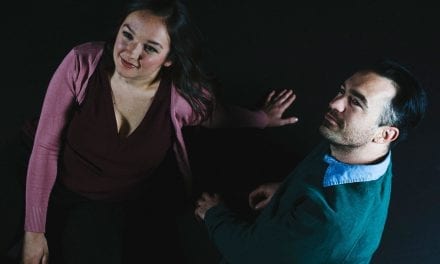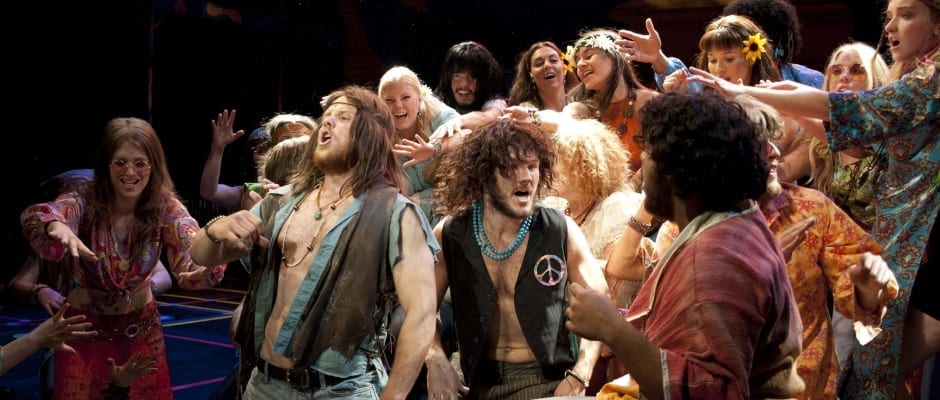OREM — In February, I praised community theatre in a UTBA blog post, and Disney’s My Son Pinocchio at SCERA Center for the Arts reaffirmed my love for these productions created by and for our local neighborhoods. Under the direction of Mindy B. Young, Pinocchio is a wonderful example of how community theatre can revel in whimsy, camp, and fun while delighting a family audience.
The performance experience at SCERA is one to be envied by community theaters everywhere. The event center houses a movie showhouse in addition to a traditional theatre stage, and patrons are given the opportunity to bring movie-style concessions (popcorn, candy, etc.) into the theater, as used to be the custom in theatrical days gone-by. Kids are welcome for these family plays, and with a convenient cry-room, one need not keep the little ones from experiencing live theatre for fear of their misbehavior. These amenities encourage a broad community attendance, and Friday’s performance proved this. The theater housed an audience comprised of all ages.
Disney’s My Son Pinocchio is a musical retelling of the popular Pinocchio tale from the perspective of Geppetto, his toymaker father. With book by David Stern and featuring music by Stephen Schwartz, the show opens with the Blue Fairy (Rebekah Osmond) singing the popular “When you Wish Upon a Star.” A humorous prologue follows in which she establishes herself as the narrator for the show. She is soon joined by Gepetto (Jim Murphy), who insists that his wish for a “full heart” was not granted when she brought Pinnocchio (Robert Oldroyd) to life. Refuting his accusation, the Blue Fairy takes them both for a ride in a time machine, where they travel back to see what prompted Geppetto’s wish, the fulfillment of that wish in Pinocchio, and his disappointment in Pinnocchio’s behavior as a young boy. Following this flashback, the puppeteer Stromboli (Shawn M. Mortensen) and his marionettes (Katelyn Gallagher and Emily Pelo) are introduced. A money-hungry showman, Stromboli sees dollar signs in the sight of Pinnocchio, a “stringless-puppet.” His wish to acquire Pinocchio for his act is granted when Pinocchio, realizing he is a disappointment to his father, runs away from Gepetto.
Pinocchio’s His time as Stromboli’s main attraction is short, however. When Gepetto comes looking for him, Pinocchio runs away, again, this time to Pleasure Island. Geppetto’s continues to look for Pinnocchio while the Blue Fairy arranges for his visit to a “child factory” where perfect but generic children are “made.” The toymaker begins to realize that a “real” child has both positive attributes and failings, as does a “real” father, and he continues more fervently on his quest to find his son. Pinnocchio is finally found with other runaway youth on Pleasure Island. The youth molest Gepetto until he is rejected by Pinnocchio. At this moment, all the children, including Pinnocchio, turn into donkeys and are ushered onto a ship. Their sea voyage is disrupted by a whale who then swallows both the pursuing Gepetto and Pinnocchio. Through combined ingenuity, the two escape the whale’s belly, but their ultimate bond is not established until the Blue Fairy grants two wishes. First, she “gives” Pinnocchio to Stromboli. Distraught, Gepetto professes his love for the boy and offers Stromboli anything for his return. Just then, Pinnocchio is transformed into a “real” boy, no longer comprised of the wood and joints characterizing puppets. With this transformation, he is no longer valuable to Stromboli, and he is united forever with his “real” father.
Despite the many diversions and unexpected turns to the plot, Young has directed a brisk hour and-a-half production. The energy on stage was consistently high and given super-human surges by the stellar child performers. In fact, it is in the company numbers that this musical really shines. The enthusiasm of the families on stage is igniting, and the combination of their passion, obvious discipline, and special directorial attention by Young result in truly memorable moments on stage.
The performances by seasoned stage veterans Rebekah Osmond, Jim Murphy and Shawn M. Mortensen are solid. (Mortensen’s inhabitation of Stromboli is particularly entertaining.) And Robert Oldroyd has certainly captured the naivety of a little boy puppet “born yesterday.” Other star puppets significantly contribute to the playfulness, fantasy, and delight of the Pinnocchio story. Nat Reed, both technical director and puppet designer, has incorporated amusing and noteworthy puppets into the production. The Pleasure Island puppet is especially larger-than life and the cause for some trepidation among the children in the audience. (Parents, beware! One long scene may cause some fright in the very little ones). This spirited puppetry is supported by Shawn M. Mortensen’s scene design that is well-executed, functional, and entertaining. The attention to detail is continued in Cole McClure’s costume design, and I thought that Pinnocchio’s puppet-suit is admiringly well-executed. In fact, each member of the cast sports enviable costumes, with the Blue Fairy’s dress a special stand-out: all Disney Princess with enchantingly “campy” blue and white Christmas lights tucked into the frilly folds and accessorized by flashing wheeled sneakers that roll Osmond fairy-like across the stage.
The glowing attributes of this productions were barely and briefly dimmed by opening night snafus (a make-up malfunction with Pinnochio’s nose and one forgotten verse in a song), and the musical’s book does have some flaws (too much plot for a short show), but Young has nicely compensated for this by focusing on the playfulness of the production and its theme of family. Disney’s My Son Pinnocchio really is a fine choice for community theatre, and SCERA proves this by showcasing fantastic family performers in a relaxed setting for a family audience.







